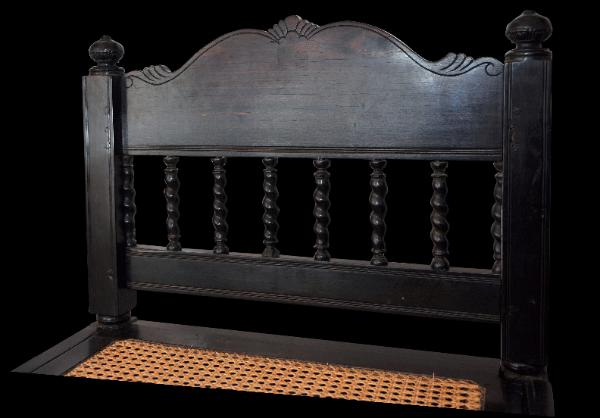
Dutch Colonial Ebony Chair
Dutch Colonial Ebony Chair
Ambon or Batavia, Indonesia
circa 1680
height: 79cm, height of seat: 42cm, width: 55cm, depth: 46cm
This chair of solid ebony has twist-turned lower rails (spindles) and legs, and smaller twist-turned pegs between the cross and back rails. The stiles, aprons and cross and back rails are plain and largely uncarved other than some restrained detailing to the scalloped top of the cross rail.
The seat is of woven cane or rattan. This is later and a closer weave of rattan has been used.
The ebony has small areas of light grain but largely is dark black. There has been little economising on the wood used and as a consequence, the chair is surprisingly heavy – ebony is a dense, heavy wood after all.
The chair most probably is from Ambon, the oldest of the permanent settlements in the East Indies of the United East India Company or
Vereenigde Oost-Indische Compagnie (VOC). Batavia is another possibility. Veenendaal (1985, p. 33) has an old photograph of the interior of a church in Ambon prior to it being bombed in the second world war which perhaps shows similar examples. Certainly, It is believed that such chairs originally were commissioned by senior VOC officials and their wives for use in church. This example is more plain than other extant examples and perhaps was more appropriate for a Protestant Reformed Church. It might also suggest an earlier dating than more elaborate examples.
As Jaffer (2002, p. 46) states, no other group of Indo-European furniture has been as misunderstood as carved ebony furniture from Sri Lanka, India and the Dutch East Indies. The furniture is of solid ebony, carved with varying degrees of relief and has twist-turned rails and other components.
Carved ebony chairs of the type here have been recorded in English collections since the mid-eighteenth century according to Jaffer and much confusion as to their origins has been caused by the nineteenth century presumption that such chairs were surviving examples of early English furniture, most likely dating to the Elizabethan period. Jaffer pinpoints Horace Walpole (1717-97) with this mis-attribution. He acquired two ebony chairs from Esher Palace, Surrey and thought that they had been the property of Cardinal Wolsey who had lived there after 1519. He acquired these and other similar types of furniture mostly at auction to furnish his Gothic revival house, Strawberry Hill. The house and its contents became much celebrated. By the early nineteenth century, Walpole’s view that the ebony furniture that he had acquired was English and early had become well established.
Further mis-attribution of such chairs arises because chairs of this type were produced in southern India, Sri Lanka and Batavia in the Dutch East Indies (now Indonesia). Indeed, in the past, this particular chair has been misidentified as being of Indian origin. (It was included in Sotheby’s London ‘The Indian Sale’ , May 23, 2006, and catalogued as colonial Indian.) Further complications arose because chairs and related furniture made in one of the three locations tended to be imported to either of the other two by relocating Dutch East India Company (VOC) officials or were traded by the VOC on a commercial basis between the three locations.
Veenendaal (1985) argues that those of Batavian or at least Dutch East Indies origin tend to have low rather than high relief carving. Also, the twist-turned rails of Indian and Ceylonese examples tend to have ‘tighter’ or more closely carved twists.
The condition of this chair is good, particularly given its age. There are a few chips, but no significant damage or repairs. The back two ball feet are however later replacements (although they too have significant age). Overall, it is a rare, early and important example of Batavian Dutch colonial furniture. Its simplicity and solidness of construction lend it a relatively austere but nonetheless elegant air.
References
Gelman Taylor, J., The Social World of Batavia: Europeans and Eurasians in Colonial Indonesia, 2nd ed., The University of Wisconsin Press, 2009.
Jaffer, A.,
Furniture from British India and Ceylon: A Catalogue of the Collections in the Victoria and Albert Museum and the Peabody Essex Museum, Timeless
Books, 2001.
Jaffer, A.,
Luxury Goods from India: The Art of the Indian Cabinet Maker, V&A Publications, 2002.
Moss, P. (ed.),
Asian Furniture: A Directory and Sourcebook, Thames & Hudson, 2007.
Tchakaloff, T.N.
et al, La Route des Indes – Les Indes et L’Europe: Echanges Artistiques et Heritage Commun 1650-1850, Somagy Editions d’Art, 1998.
Veenendaal, J.,
Furniture from Indonesia, Sri Lanka and India During the Dutch Period, Foundation Volkenkundig Museum Nusantara, 1985.
Provenance
Formerly in the collection of the late Toby Falk, (UK), a noted scholar and collector of Asian art.
Inventory no.: 1296
SOLD

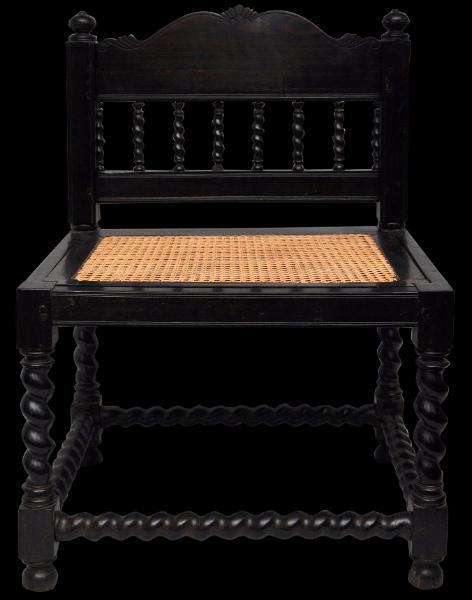
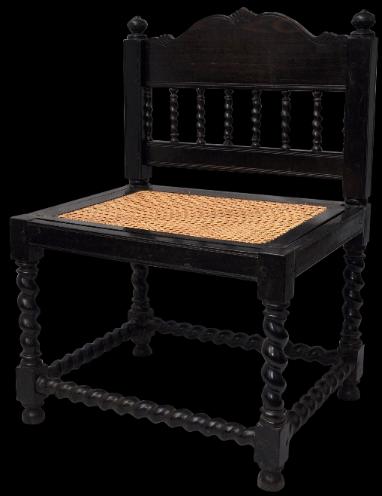
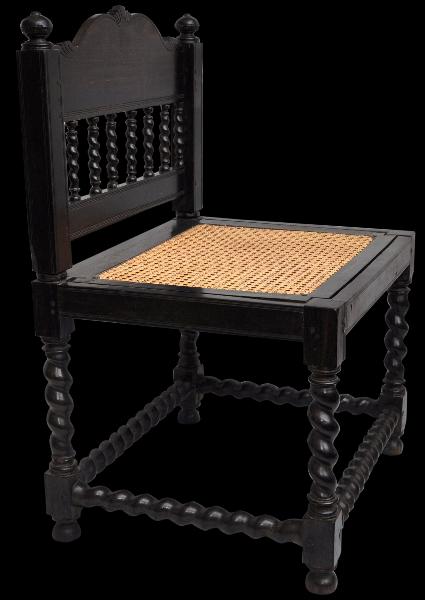
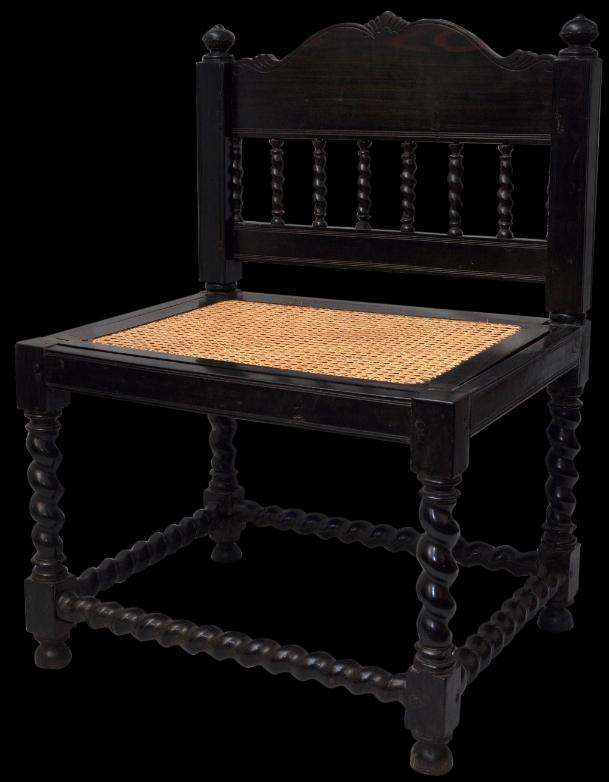
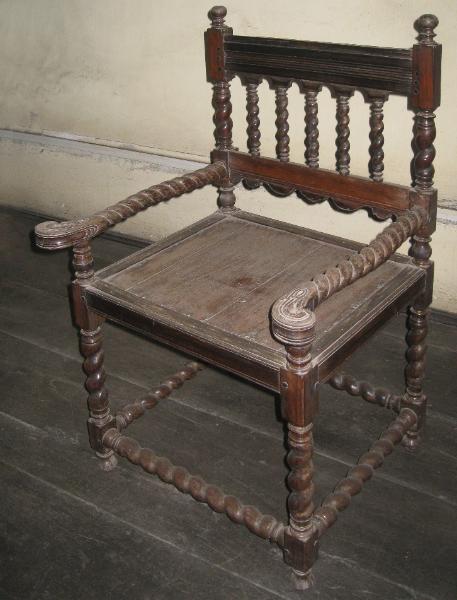
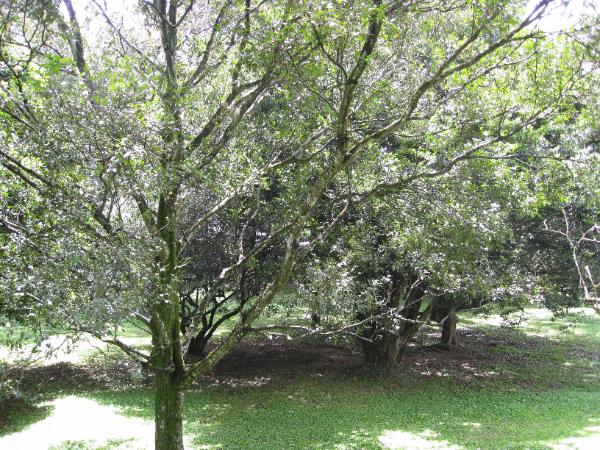
Ebony trees, photographed in central Sri Lanka, 2011.
Ebony was sourced from Sri Lanka and the Dutch East Indies.
A chair with some similarities of form, but this example is from Ceylon. Photographed at the Colombo Dutch Museum, Colombo, 2011.

